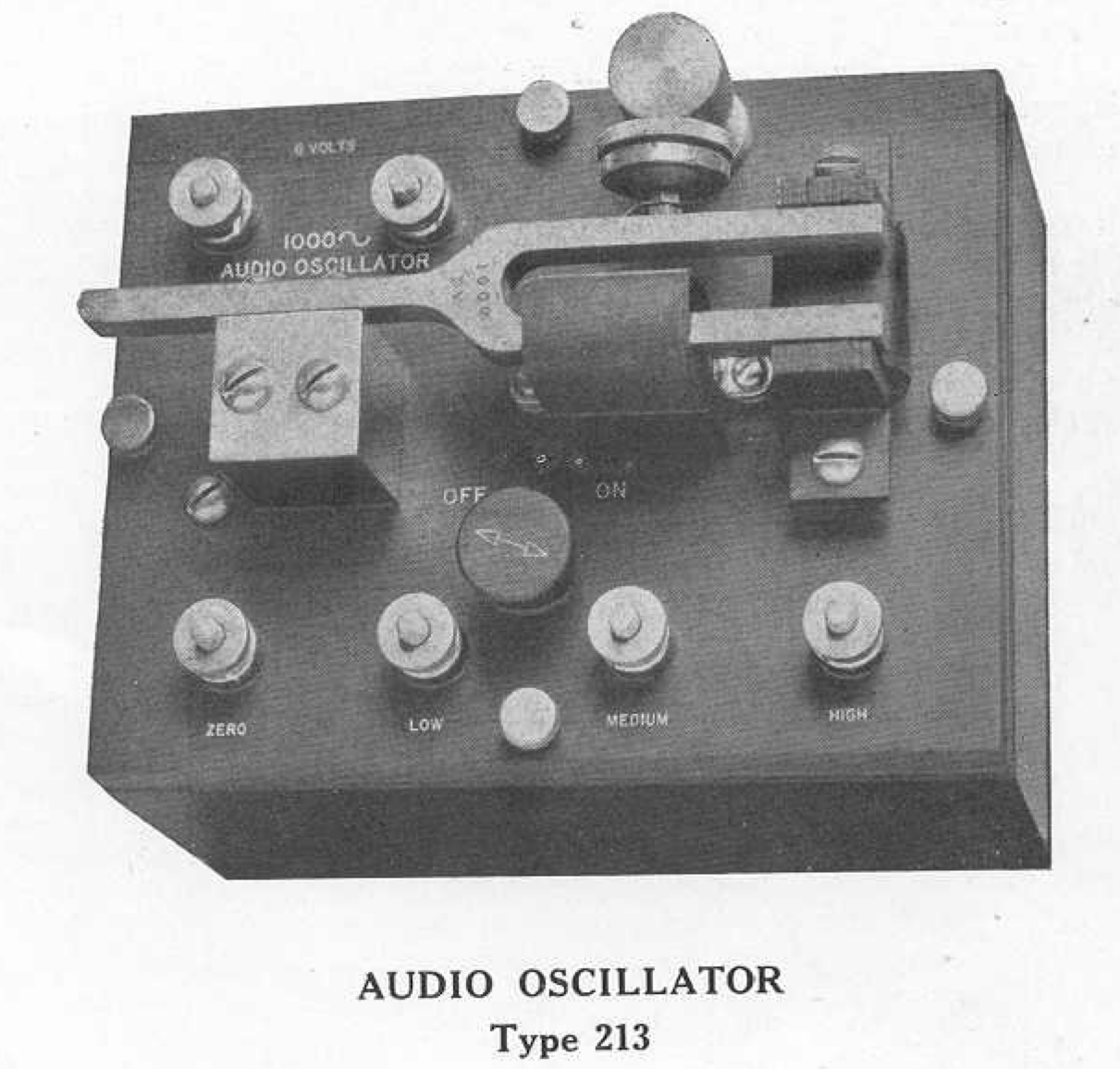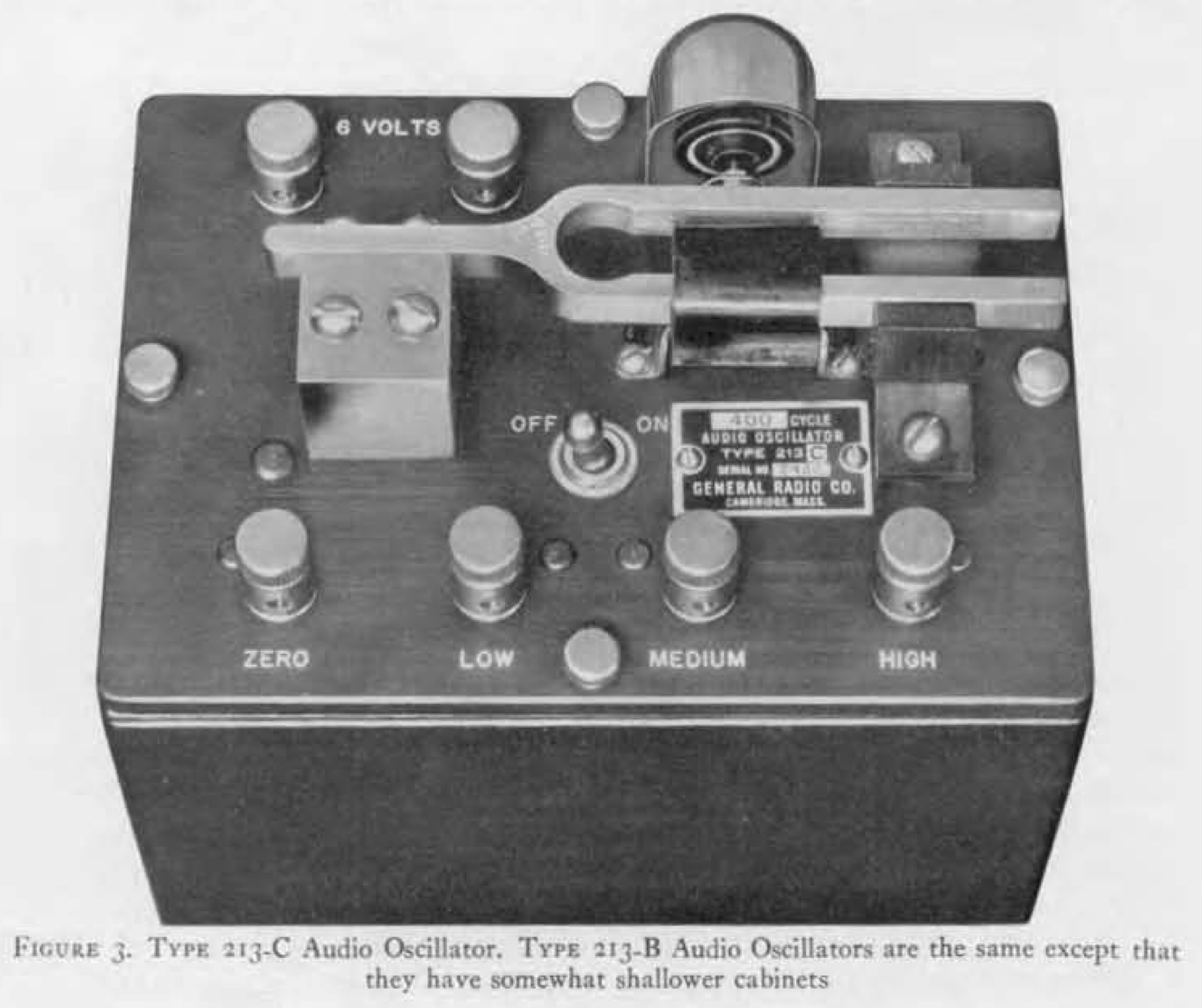General Radio Tuning Fork Oscillators
1. Introduction
General Radio produced a series of audio oscillators using a tuning fork as the resonant element. They include the Type 213, 213-B, and 213-C, the Type 813, and the Type 723.
2. The Type 213 Audio Oscillator
The General Radio Type 213 Audio Oscillator was introduced in Bulletin 701 in February of 1920. It was a tuning fork oscillator at 1,000 Hertz designed to provide a power source for AC bridge measurements. The tuning fork was used to produce a sine wave with a low harmonic content, so that harmonics do not obscure the null of the fundamental frequency on the bridge.
The active amplifying element in the Type 213 was a carbon button microphone.
2.1. The Types 213-B and 213-C
The later Type 213-B and 213-C Audio Oscillators were described in the April 1930 issue of the General Radio Experimenter.
The 213-B provides a 1,000 Hertz output and the 213-C provides a 400 Hertz output.
3. The Type 813-A Audio Oscillator
The General Radio Type 813-A Audio Oscillator was described in the May 1935 issue of the General Radio Experimenter.
4. The Type 723 Vacuum-Tube Fork
The Type 723 Vacuum-Tube Fork oscillator was described in the October 1941 issue of the General Radio Experimenter.
4.1. From Carbon-Button Microphone to Vacuum Tube
The 723 replaced the carbon-button microphone of the previous tuning fork oscillators with magnetic pickup coils and a vacuum-tube amplifier.
4.1.1. Distortion characteristics
The vacuum-tube amplifier offered much lower harmonic distortion than the earlier carbon-button models.

